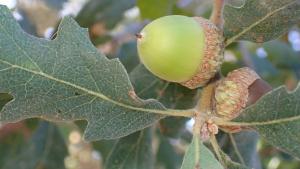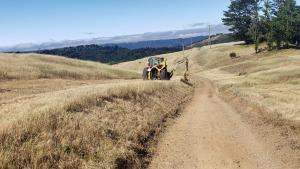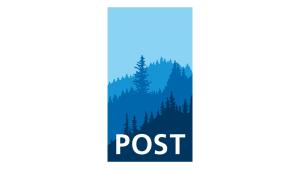Mature forests are complex ecosystems that have survived for millennia. They teach us about living with fire and climate change, and how to care for the formerly logged forests on Midpen lands.
Building on the success of several partner projects in the region, Midpen is planning for a similar restoration forestry project to improve the health of approximately 130 acres of redwood forest in La Honda Creek Preserve and is currently developing a work plan based on current science and community and partner input.


Goals and Objectives
Forests throughout the Santa Cruz Mountains have been significantly altered by humans through intense historic logging resulting in dense regrowth, fire suppression resulting in fuels accumulation, rural development, introduced pathogens such as sudden oak death and the effects of climate change.
The goals of this project are to:
- Restore and promote healthy, resilient, mature forests.
- Improve watershed health and function by reducing sedimentation primarily from legacy logging roads.
- Enhance wildlife habitat and carbon storage.
- Increase the forest's resilience to fire, disease and climate change.

Stay informed!
Highlights
This video highlights restoration forestry projects in the Santa Cruz Mountains and beyond completed by our partners at Save the Redwoods League, Sempervirens Fund, California State Parks and Peninsula Open Space Trust. It is a recording of a presentation given to Midpen's board of directors in July 2021.
Restoration Forestry Science
Current science shows us that diversity of age, species, size and genetics of trees are key to forest resilience and survival. Mature forests are spatially diverse with trees standing together and individually interspersed with fallen logs and natural openings.
Selectively removing some small trees in formerly logged forests can accelerate tree growth by reducing competition for sunlight and water, putting the forest on a path to return more quickly to mature, old-growth conditions.
Selective Thinning is One Forest Health Strategy
Selectively removing some small trees in formerly logged stands is a restoration forestry technique that has been successfully used by Midpen’s conservation partners in the region and is proposed as part of Midpen’s La Honda Forest Health Project. Thinning from below also reduces ladder fuels to increase wildland fire resiliency. This strategy can accelerate tree growth by reducing competition for sunlight and water, putting the forest on a path to return more quickly to mature, old-growth conditions.
Using Timber Harvest Plans for Conservation Projects
In order to implement this strategy, Midpen will develop an environmental review with public agencies and the interested public, and a subsequent permitting process with regulatory agencies to create a timber harvest plan that guides the restoration project. These plans are prepared by registered professional foresters and detail site-specific treatments for each forest stand to achieve desired ecological outcomes. The process for creating these plans typically takes two years with CAL FIRE as the lead agency and includes a robust public process and inspection from local, state and federal agencies prior to approval.
In some cases where feasible and ecologically beneficial, removing selectively thinned trees from the forest can reduce fuels for potential wildland fire while keeping the stored carbon intact. While most selectively thinned trees would be too small to have any commercial value, if such trees could be used as building materials, Midpen’s forest management policies require that any funds generated would be put directly back into supporting the forest restoration project.
Forests: A Powerful Tool for Climate Change Resilience
Forests actively clean the air and store carbon. Mature redwoods capture and store more carbon per acre than any other tree or plant. The trees in the La Honda Creek Preserve project area contain approximately 440,000 metric tons of carbon dioxide. They sequester approximately 16,500 metric tons of carbon each year, equivalent to avoiding the emissions of 3,600 cars driven in one year. The proposed project would increase carbon storage and sequestration over time by accelerating the growth of redwood trees.
Adaptive Management
By using control plots and measuring tree-stand structure and soil changes, Midpen can make any needed adjustments to subsequent work stay on track to reach this project's larger restoration goals.
More About Forest Health Projects
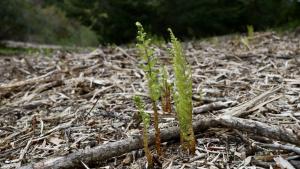
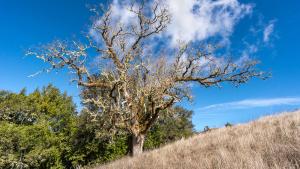
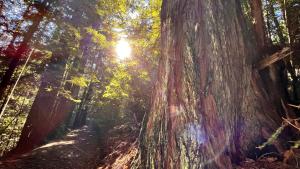

Anticipated Timeline
June 26, 2019 | Public meeting: Award of contract for forest assessment and planning. (agenda and minutes) |
2019-2021 | La Honda Forest Health Assessment and Management Plan prepared. |
July 28, 2021 | Public meeting: Midpen board adopts La Honda Forest Health Assessment and Management Plan and authorizes addition of newly purchased parcel to the project. (agenda and minutes) |
Oct. 12, 2022 | Public meeting: Midpen board review of Forest Health Plan. (agenda and minutes) |
July 26, 2023 | Public meeting: Study session with the Midpen board on the La Honda Forest Health Project. (agenda and minutes) |
Oct. 2, 2023 | Request for proposals issued seeking a registered professional forester to prepare a timber harvest plan, conduct community outreach and support project implementation. |
Jan. 10, 2024 | Public meeting: Award of contract to registered professional forester. (agenda and minutes) |
2024 - 2025 | Preparation of timber harvest plan, community outreach. |
| Tentative 2025-2026 | Timber harvest plan submitted to CAL FIRE for review. |
| Tentative 2026-2028 | Pending approval from CAL FIRE, initiate implementation of forest health treatments. |
Partners and Community
Midpen is working with several regional partners who have successfully completed similar projects and studies to develop a sound, science-based approach.



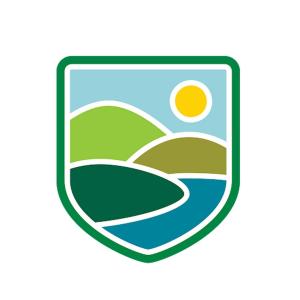
Related Projects



